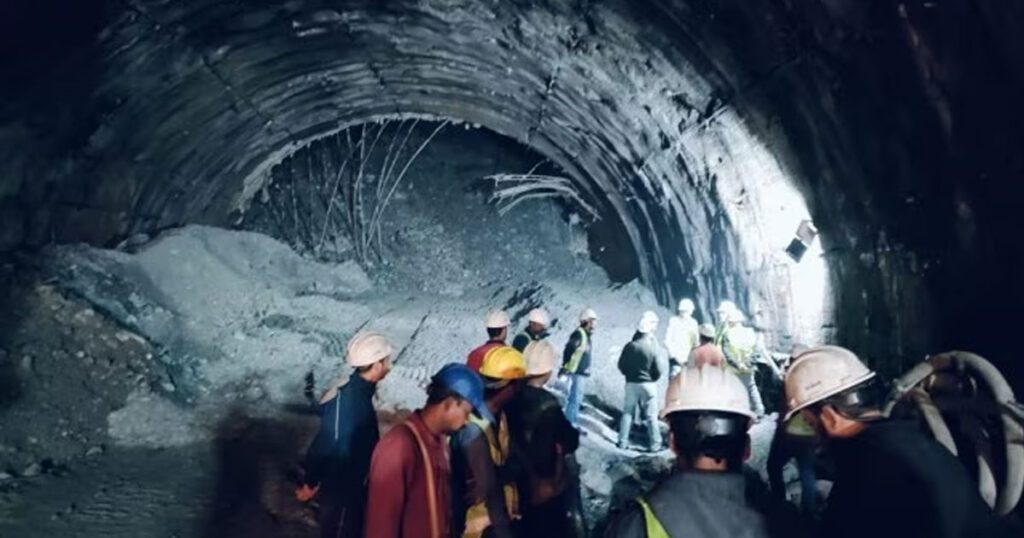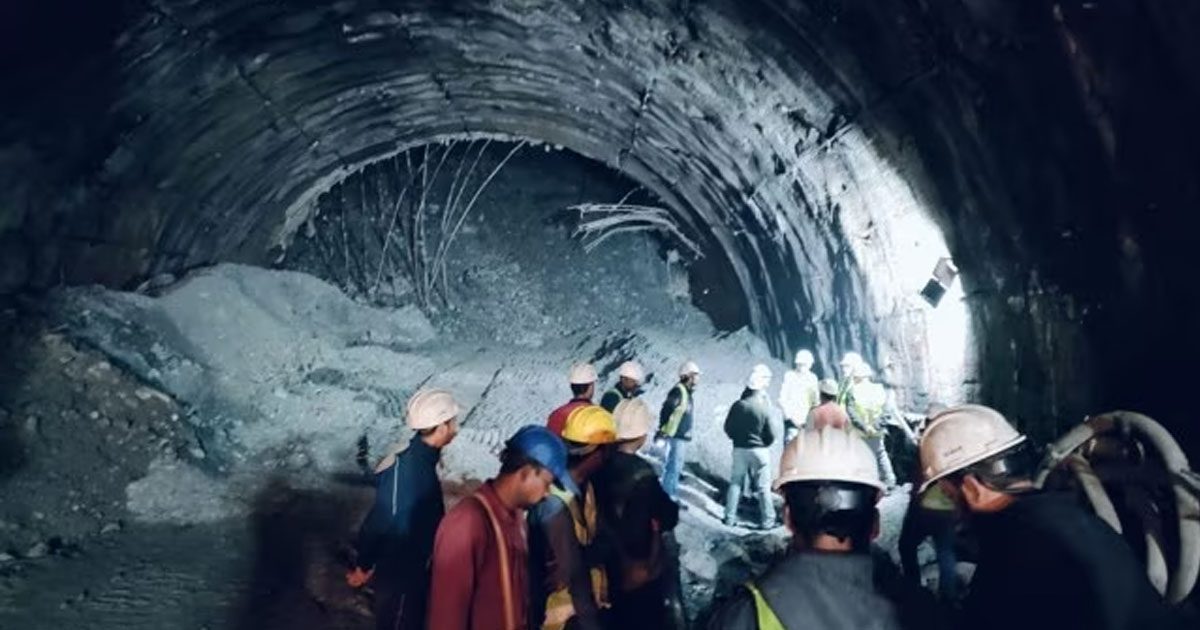In the heart of the Himalayas, a tale of resilience and hope unfolded in November 2023, as rescue workers tirelessly toiled to save 41 laborers trapped in a collapsed tunnel. The Silkyara Bend – Barkot tunnel, part of the ambitious Char Dham all-weather road project, had caved in, leaving the workers buried beneath the debris. Against all odds, the rescue operation, spanning over 10 days, became a testament to the human spirit’s ability to overcome adversity.
The Collapse
On November 12, 2023, at approximately 5:30 AM, a section of the Silkyara tunnel, located in Uttarkashi district of Uttarakhand, India, collapsed. The tunnel, being excavated using the New Austrian Tunneling Method (NATM), was intended to provide a shorter and safer route to the renowned Hindu pilgrimage sites of Gangotri, Yamunotri, Kedarnath, and Badrinath.
The sudden collapse, caused by a combination of geological instability, heavy rainfall, and inadequate safety measures, trapped 41 workers inside the tunnel. The news sent shockwaves through the region as the fate of the trapped laborers hung in the balance.

The Rescue Operation: A Race Against Time
A massive rescue operation was launched immediately following the collapse, involving personnel from the National Disaster Response Force (NDRF), the State Disaster Response Force (SDRF), and the Indian Army. The operation was fraught with challenges, including:
- Limited access to the tunnel: The collapsed tunnel posed a significant obstacle for rescue workers, who had to carefully navigate through the debris to reach the trapped laborers.
- Unstable terrain: The mountainous terrain in Uttarakhand added to the complexity of the rescue operation, as workers faced the risk of landslides and further tunnel collapses.
- Communication difficulties: Maintaining communication with the trapped laborers was crucial for their survival and rescue efforts. However, the dense debris and unstable power supply made communication challenging.
A Glimmer of Hope: First Signs of Life
Despite the daunting challenges, the rescue team remained steadfast in their efforts, working day and night to locate and rescue the trapped laborers. After days of relentless digging, a glimmer of hope emerged when rescuers established contact with a group of survivors.
The news of the survivors sent a wave of relief and optimism through the nation. With renewed vigor, the rescue operation intensified, and the team worked tirelessly to reach the remaining trapped laborers.
Miracle in the Mountains: All 41 Rescued
After 11 days of relentless effort, the impossible became possible. On November 23, 2023, the last of the 41 trapped laborers was rescued from the collapsed tunnel. The nation rejoiced as the survivors emerged, weak and weary but alive, their faces etched with gratitude and relief.
The successful rescue operation was a remarkable feat of human resilience and determination, a testament to the unwavering spirit of the rescue team and the indomitable will of the survivors.
Aftermath and Lessons Learned
The Uttarakhand tunnel collapse served as a stark reminder of the importance of safety measures in construction projects, particularly in challenging environments like the Himalayas. An investigation into the incident revealed several shortcomings in safety protocols and risk assessment procedures. The incident has prompted a renewed focus on safety measures in the Char Dham project and other infrastructure projects in the region.
The Uttarakhand tunnel collapse and the subsequent rescue operation stand as a poignant reminder of the human capacity for hope, perseverance, and the power of teamwork in the face of adversity. The story of the 41 rescued laborers is a testament to the indomitable spirit of the human race and the unwavering determination of those who risked their lives to save others.tunesharemore_vertadd_photo_alternate









